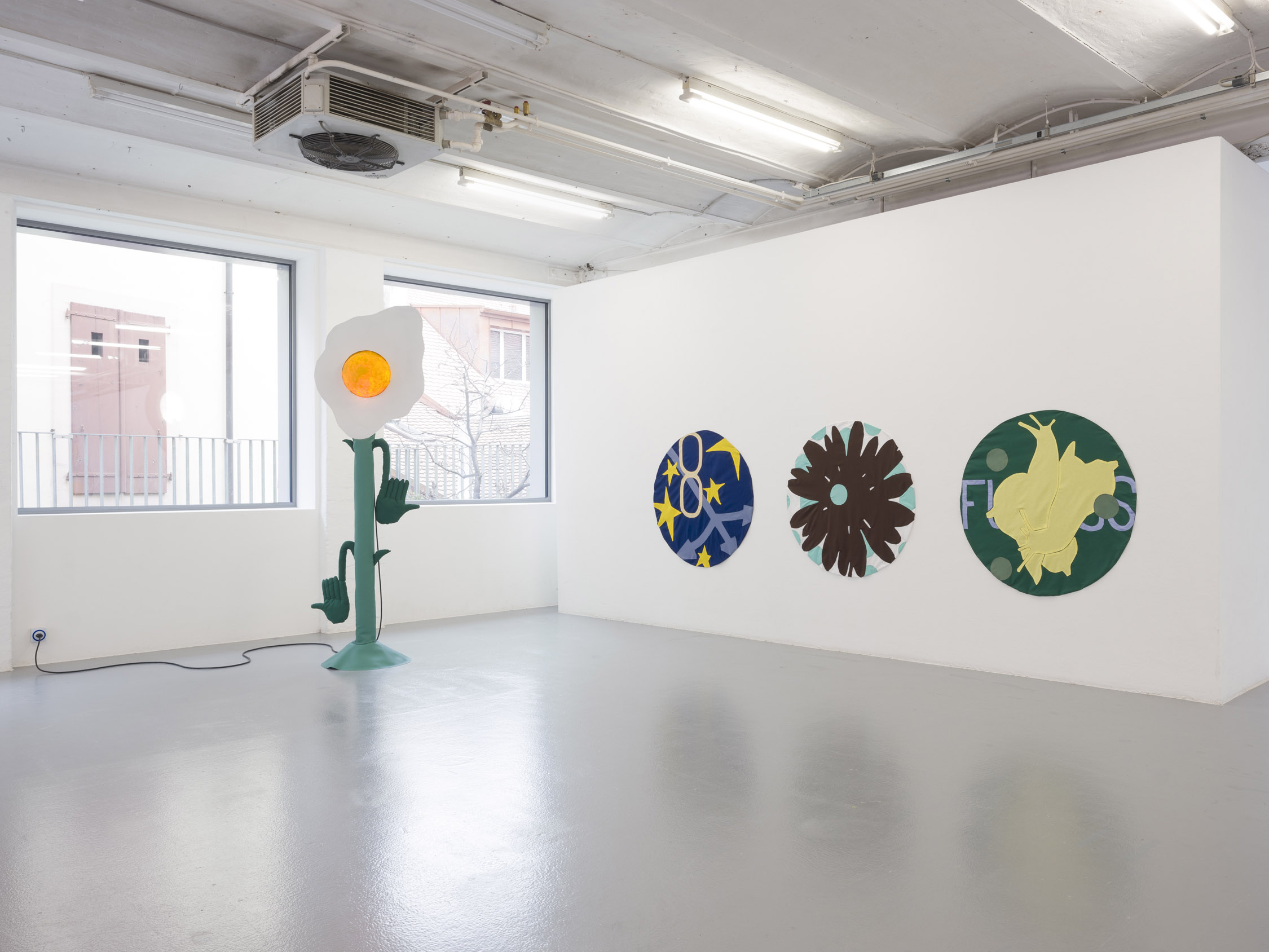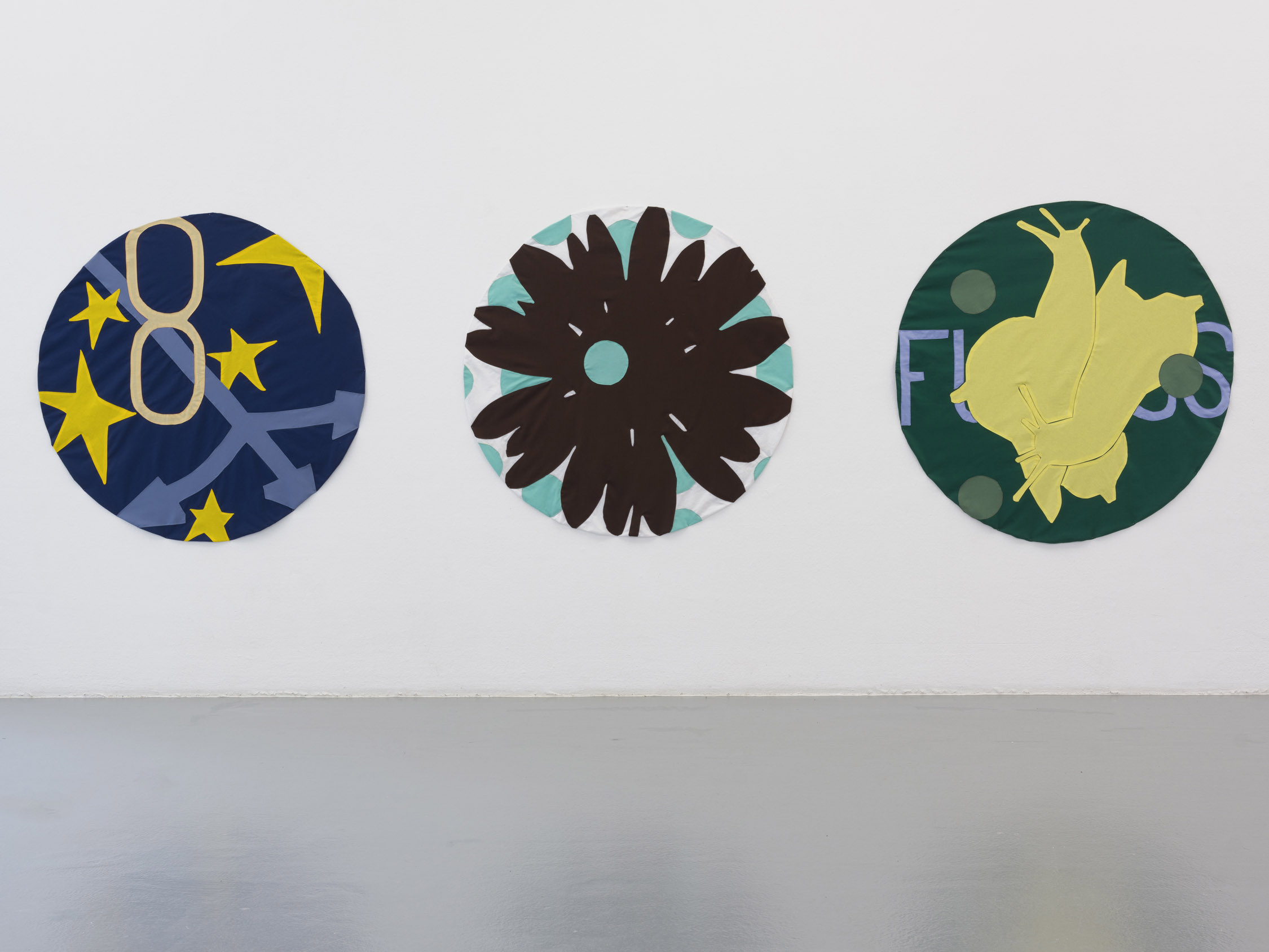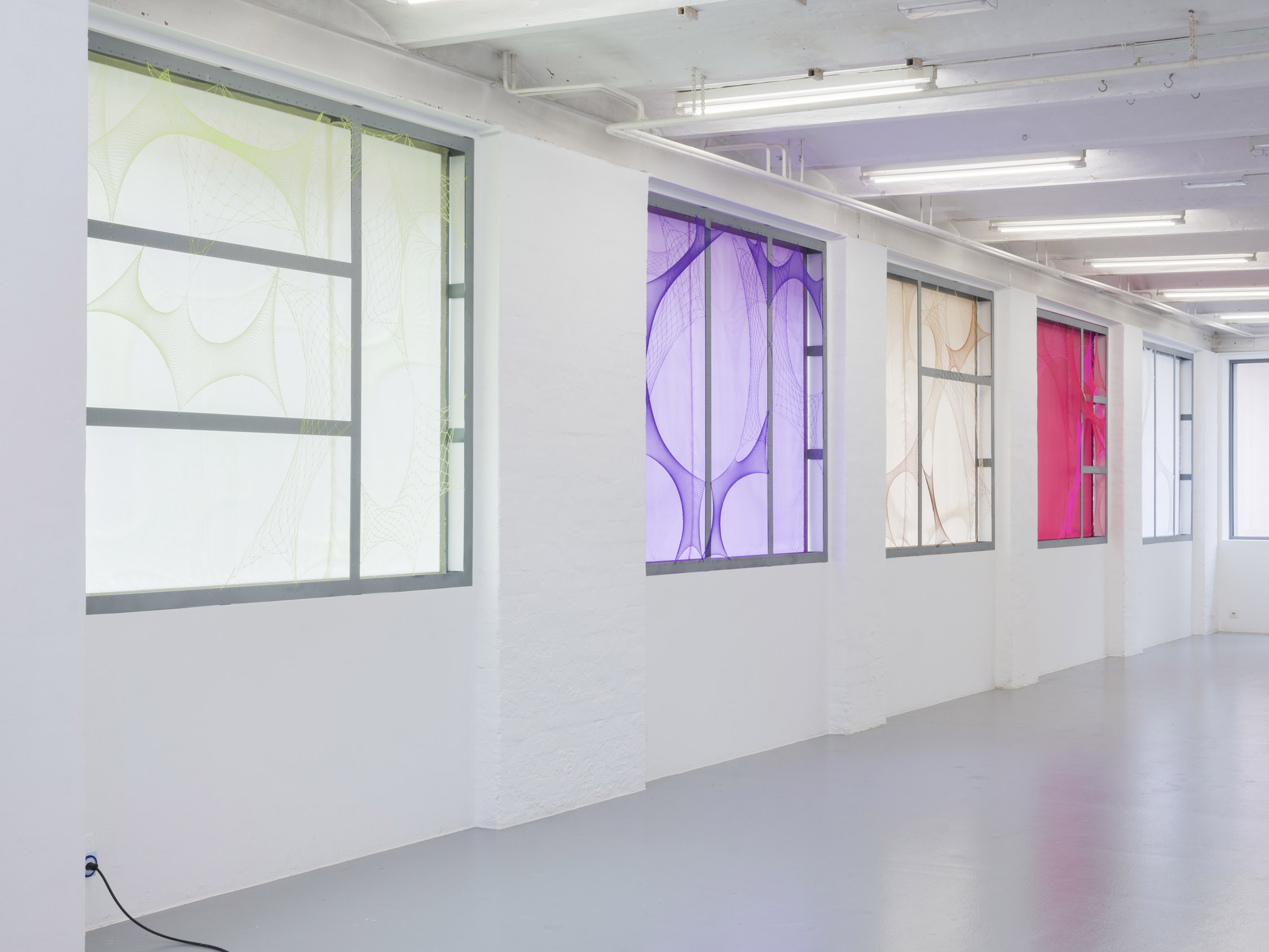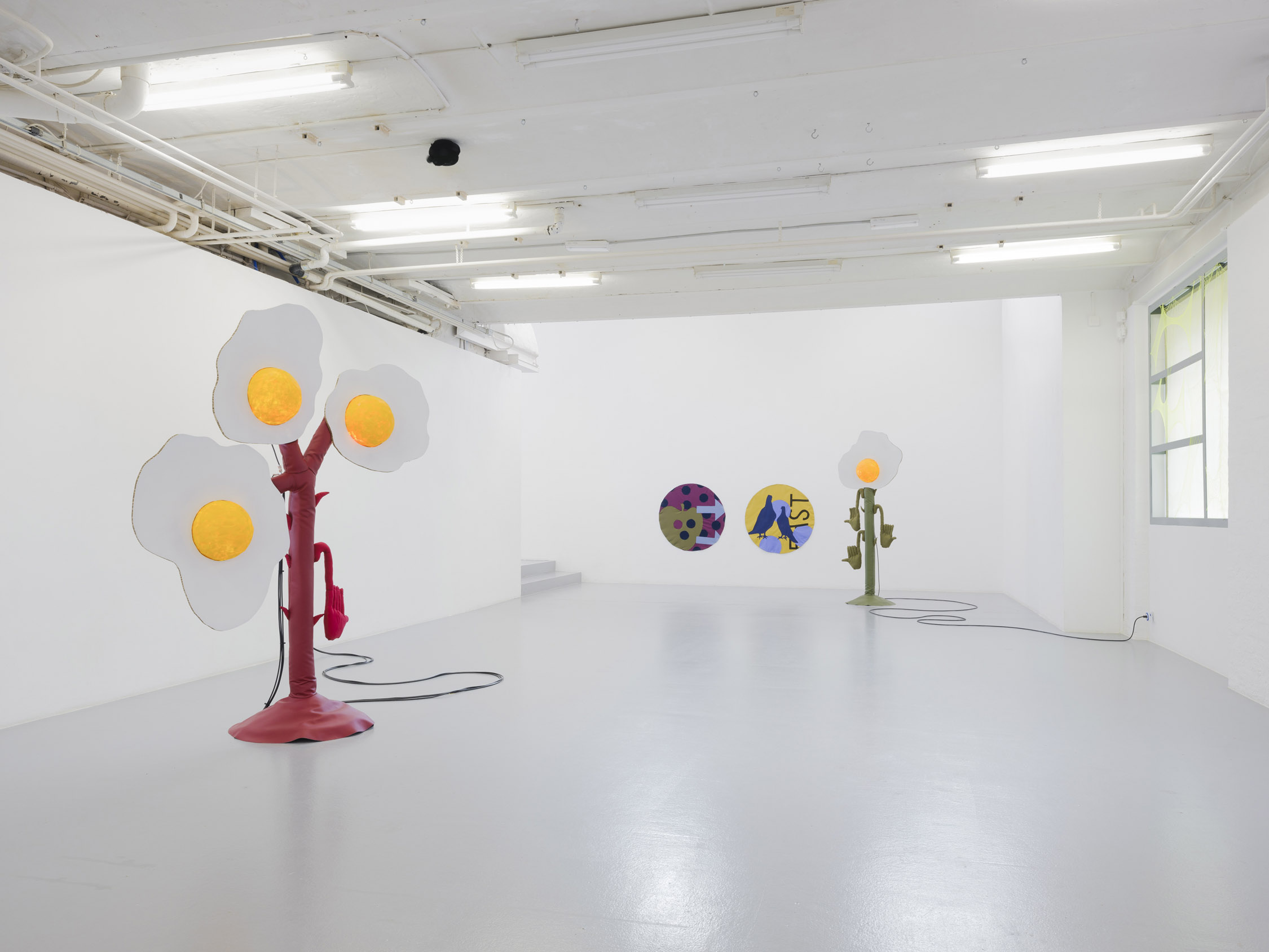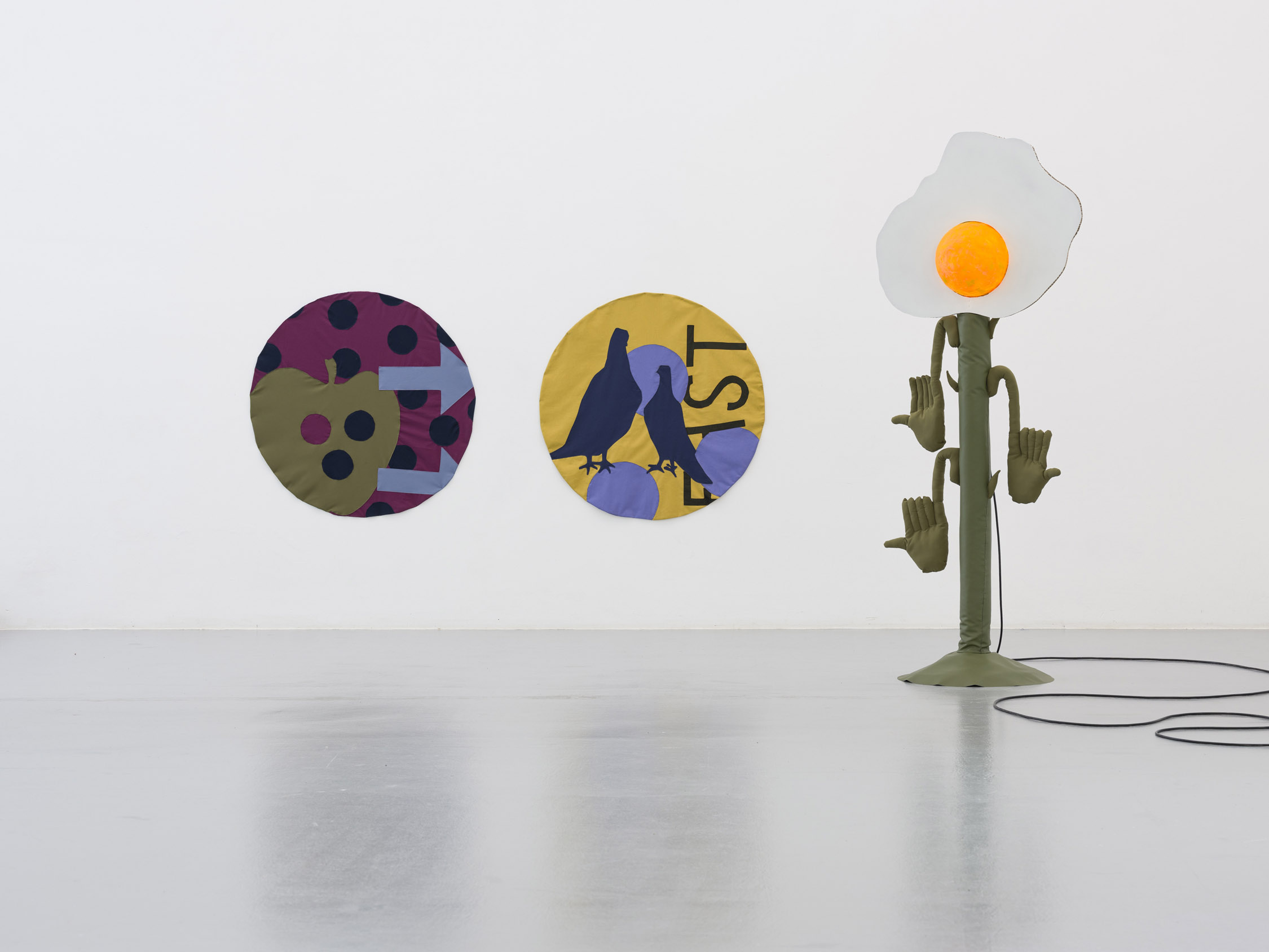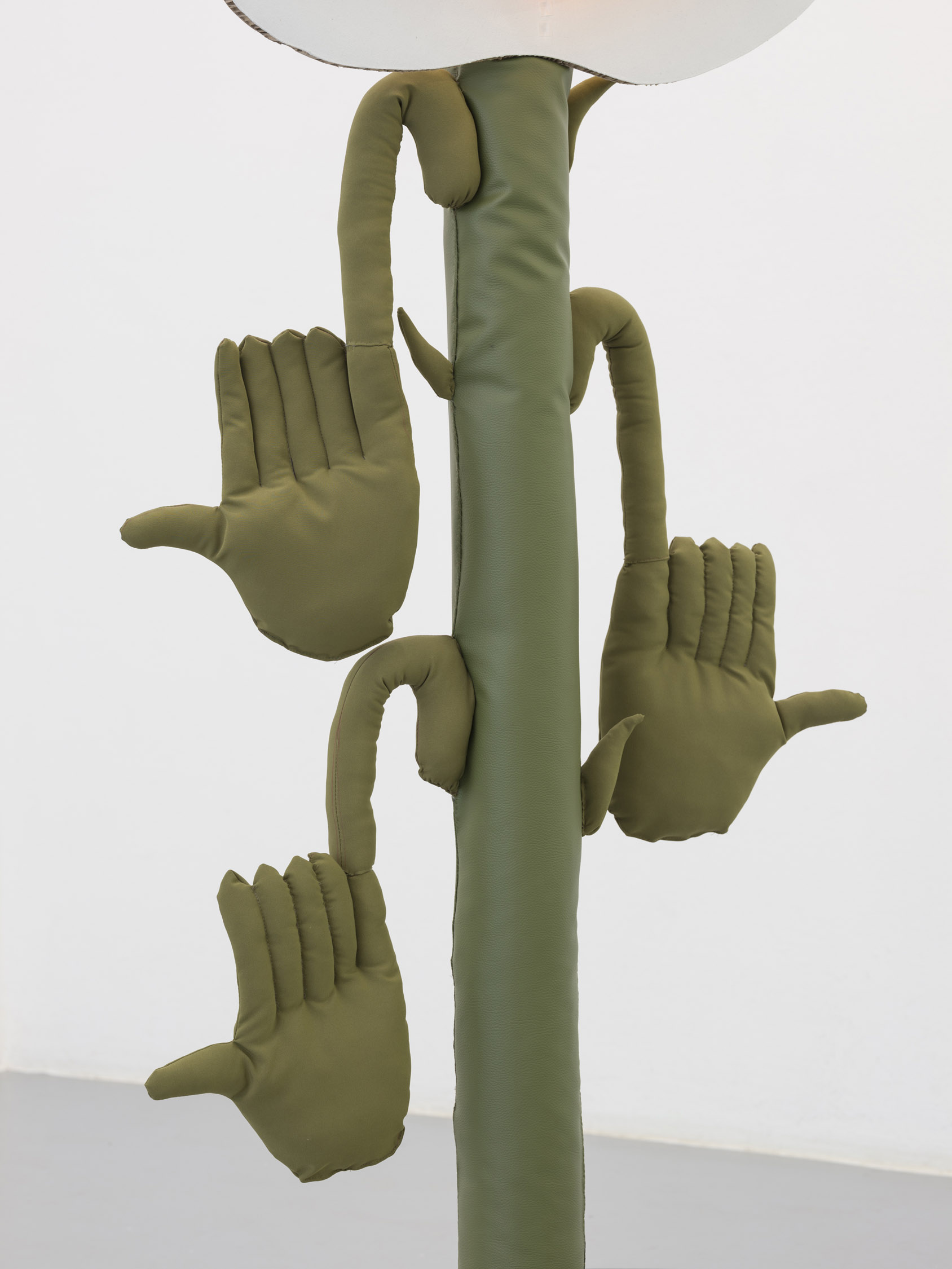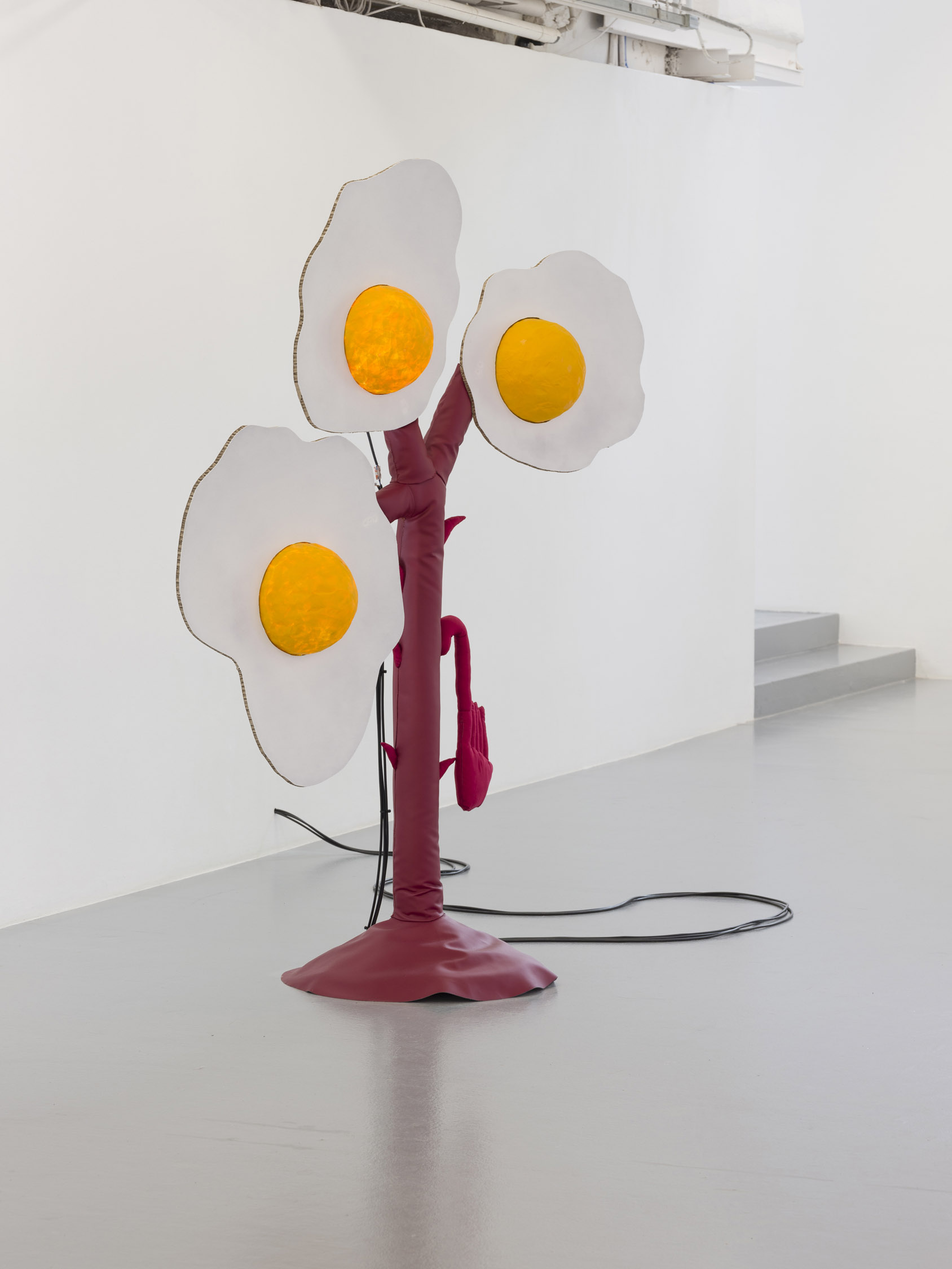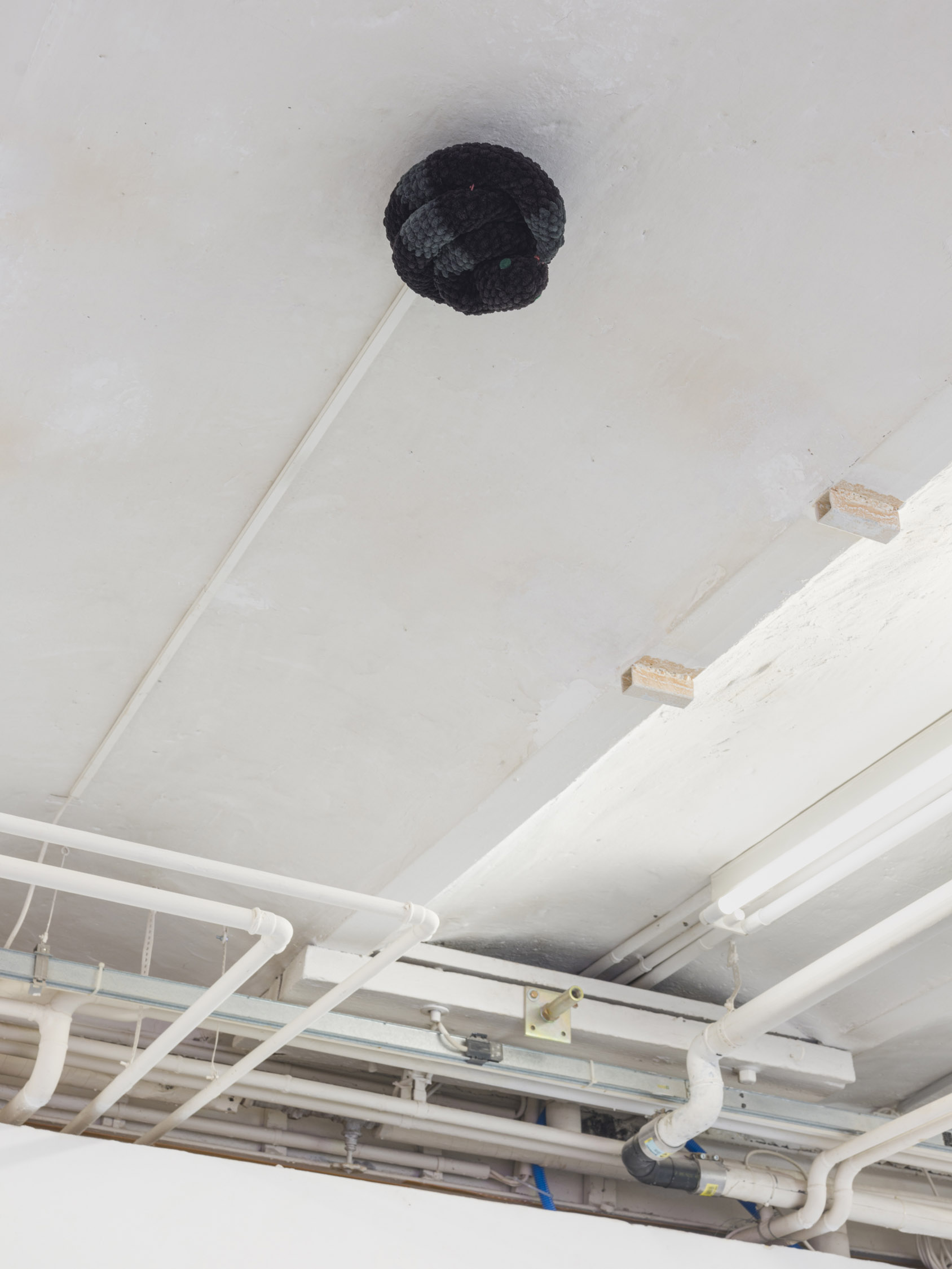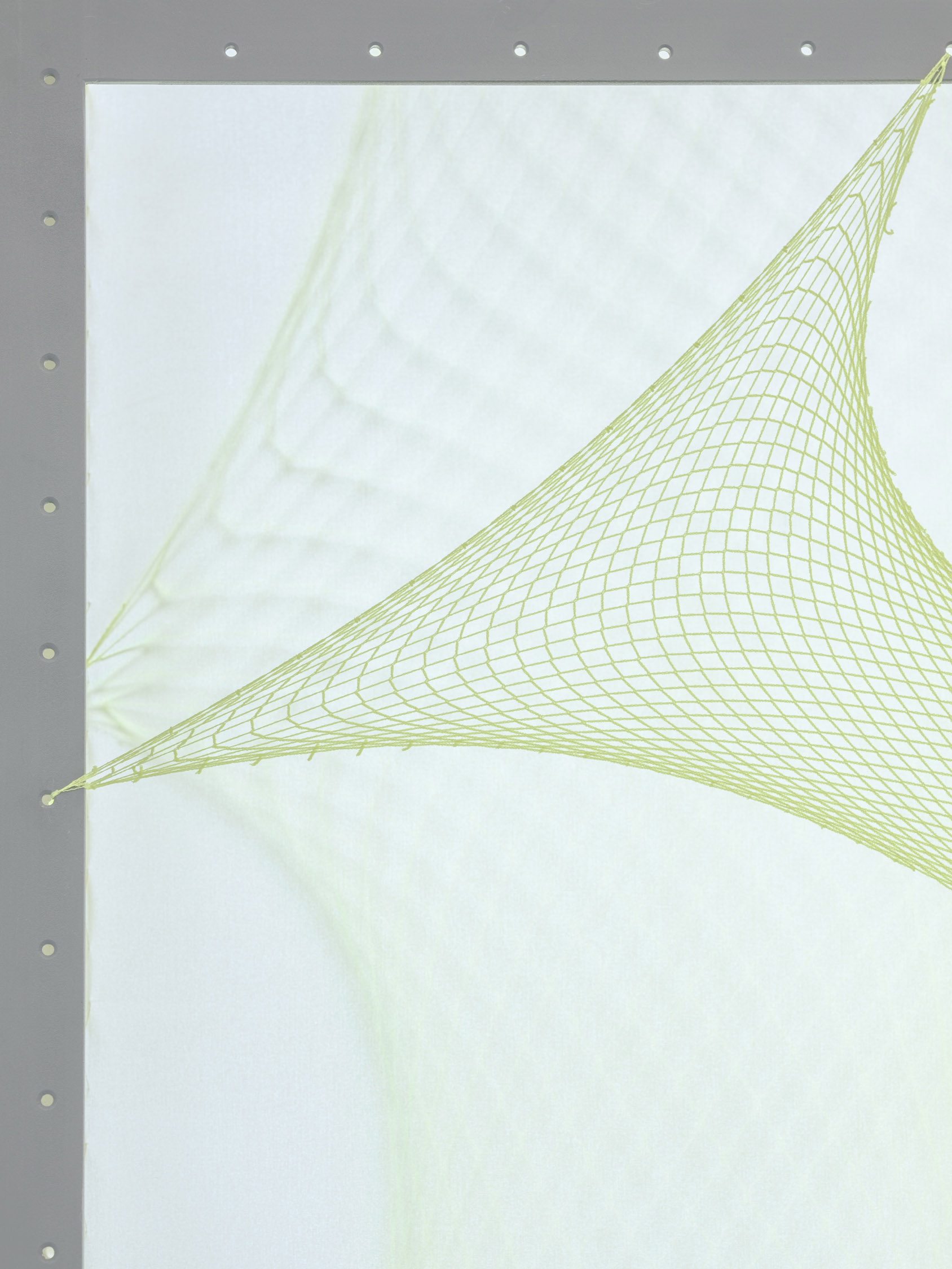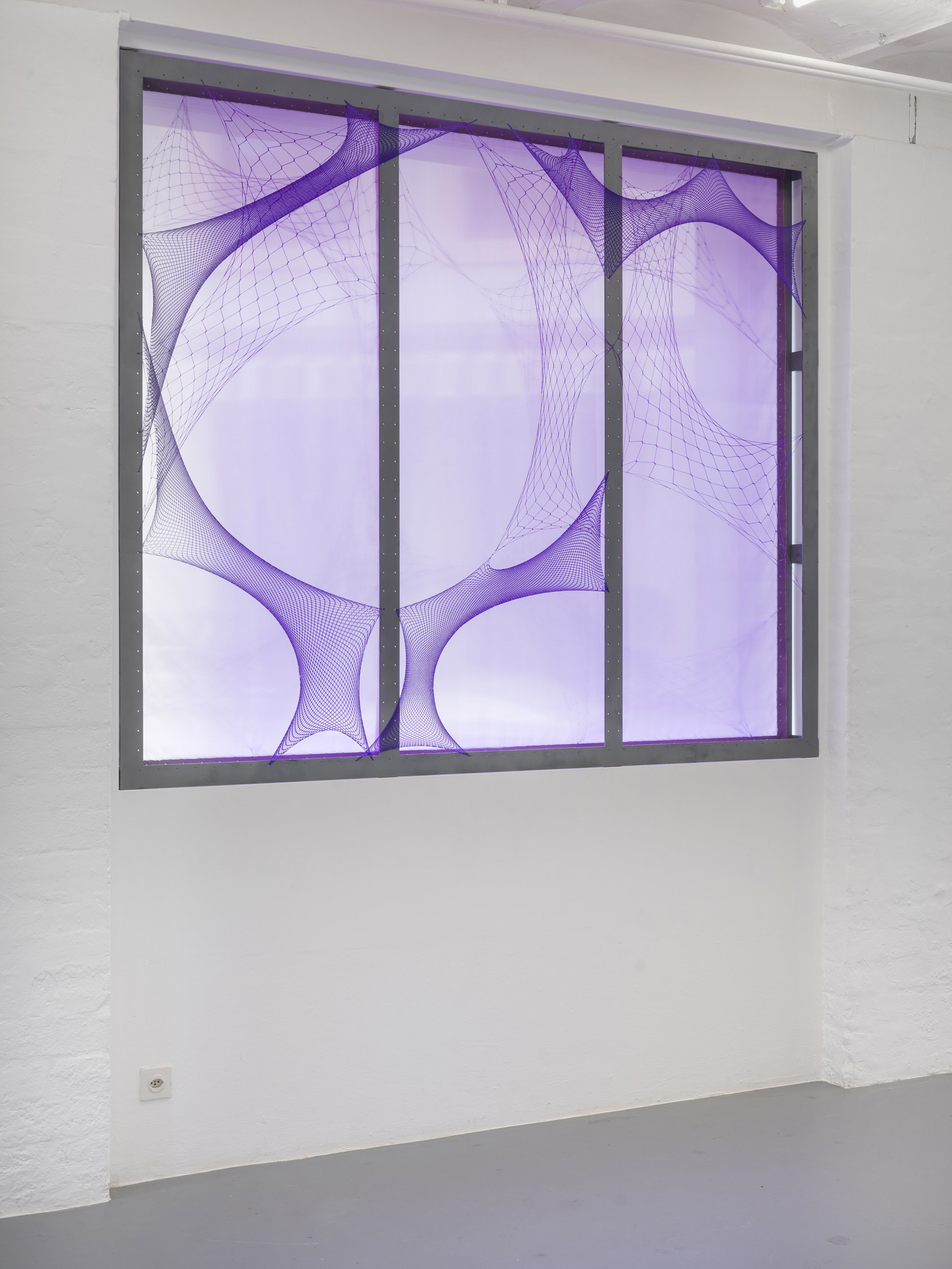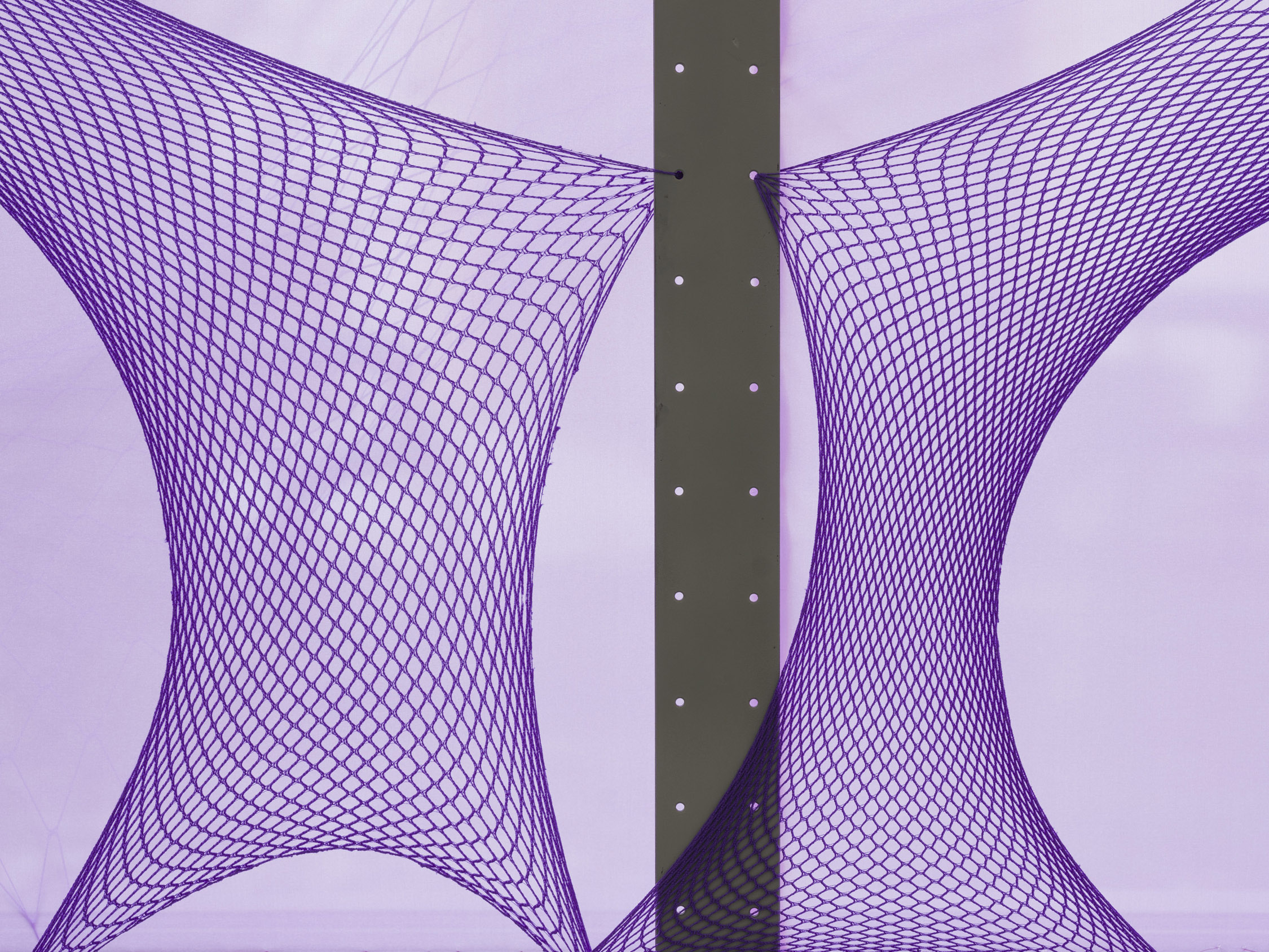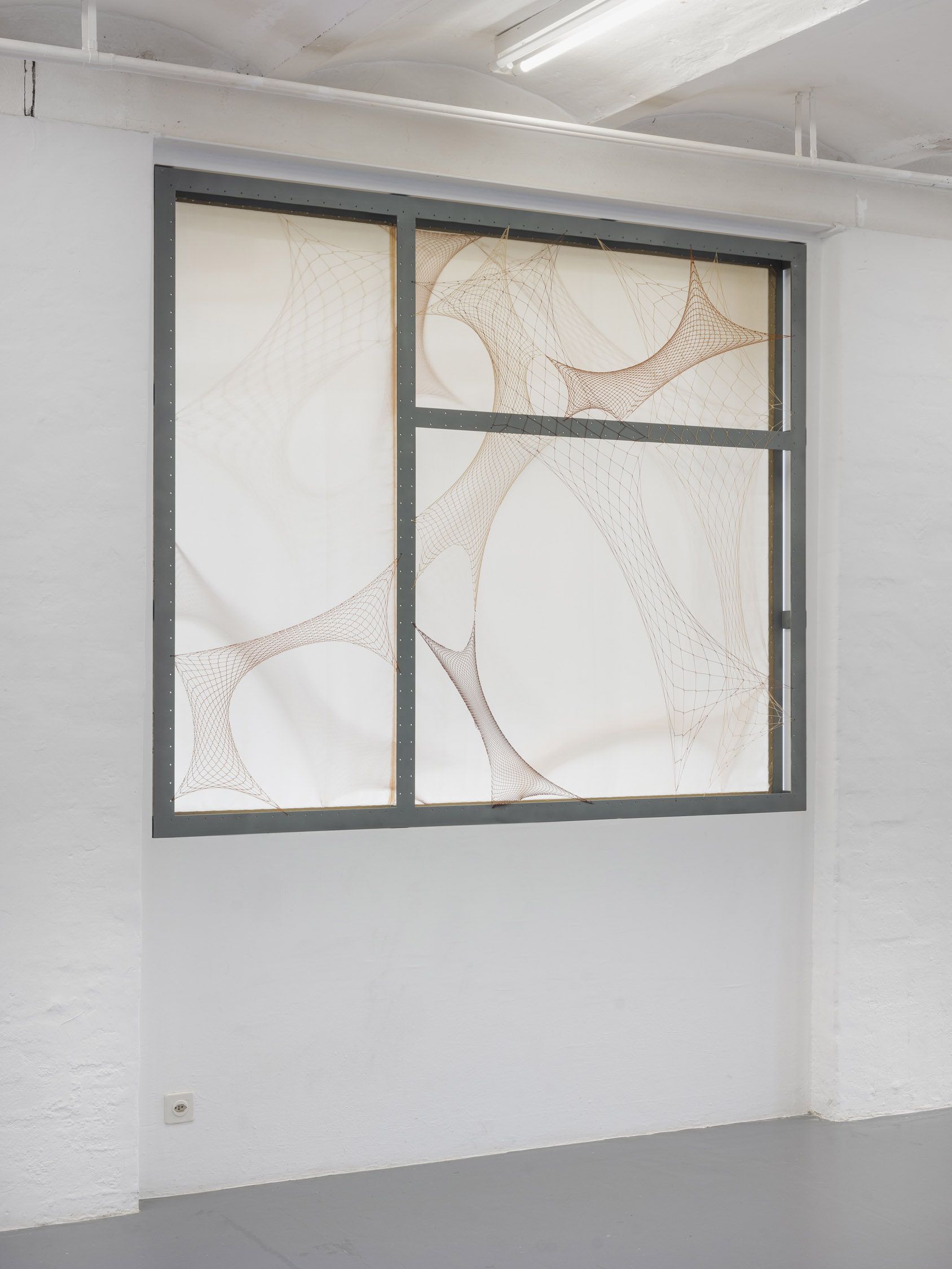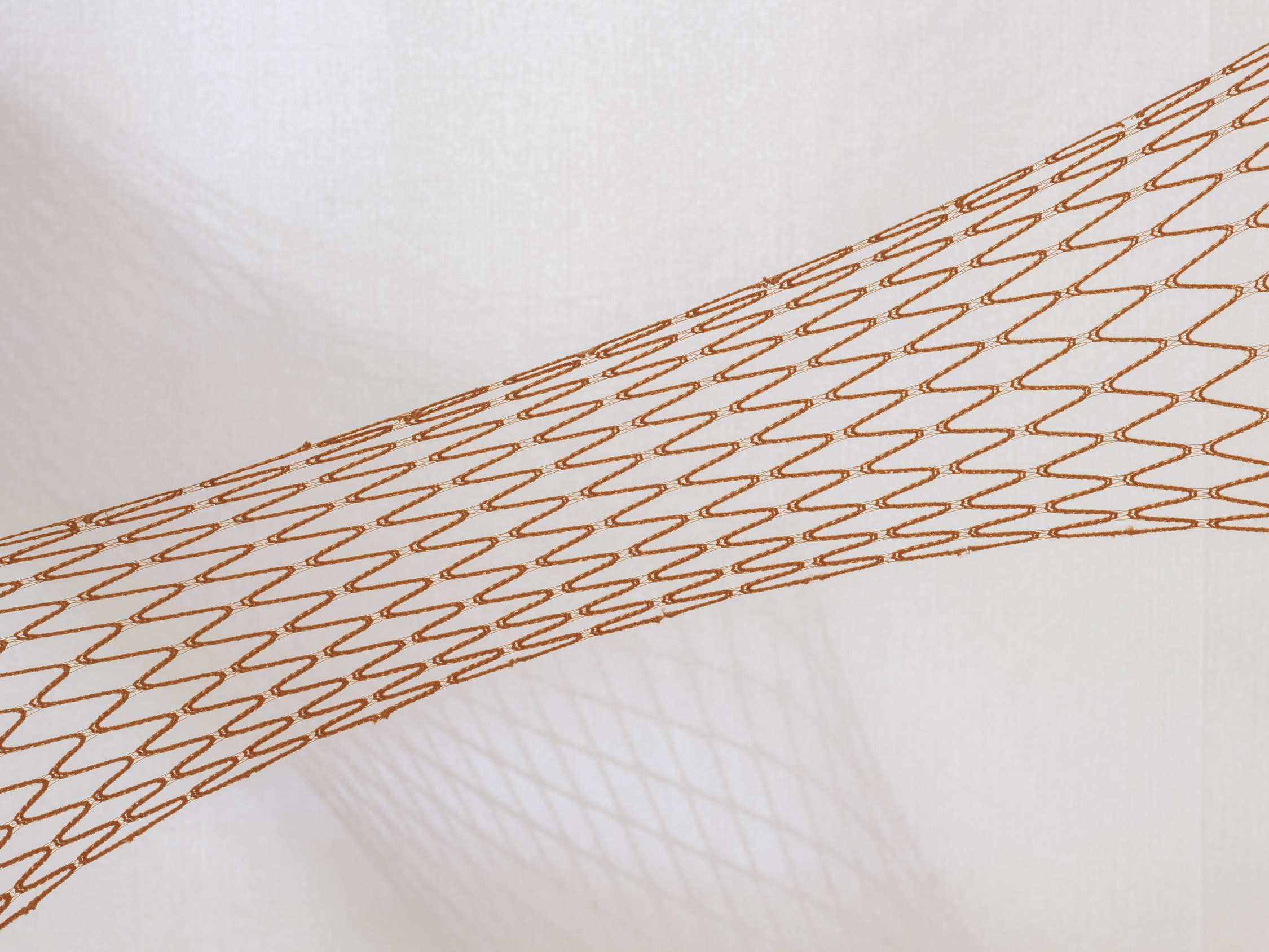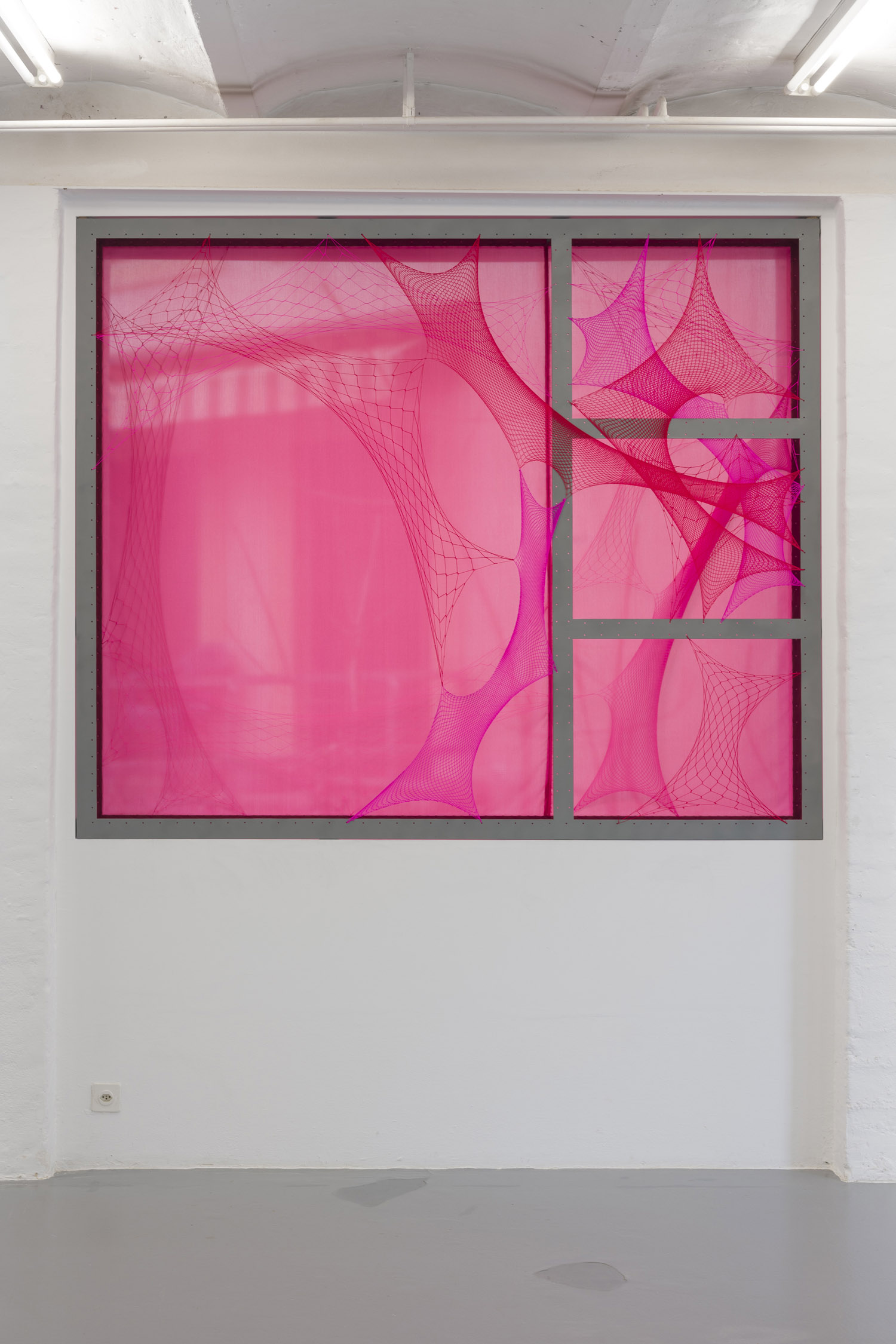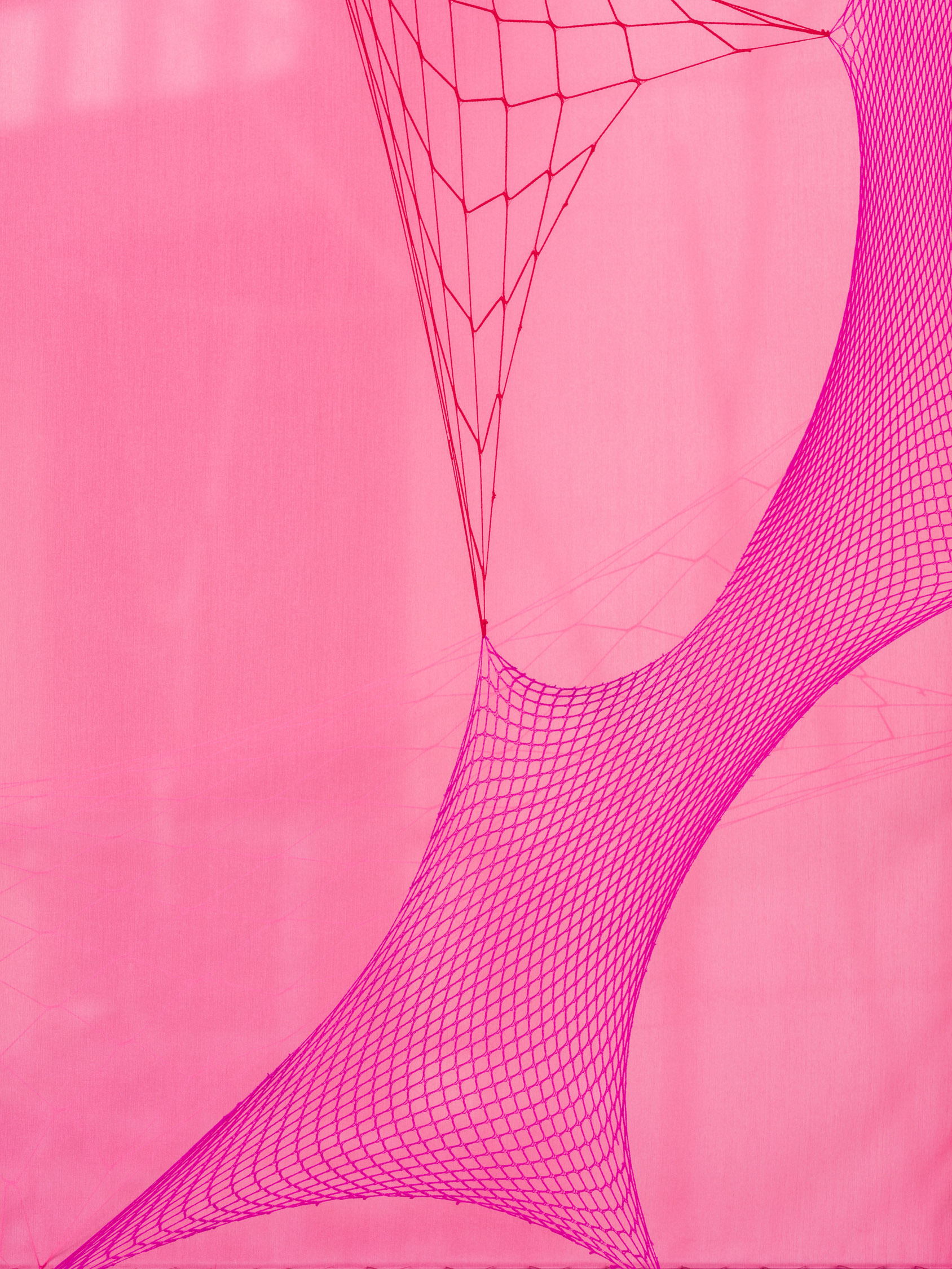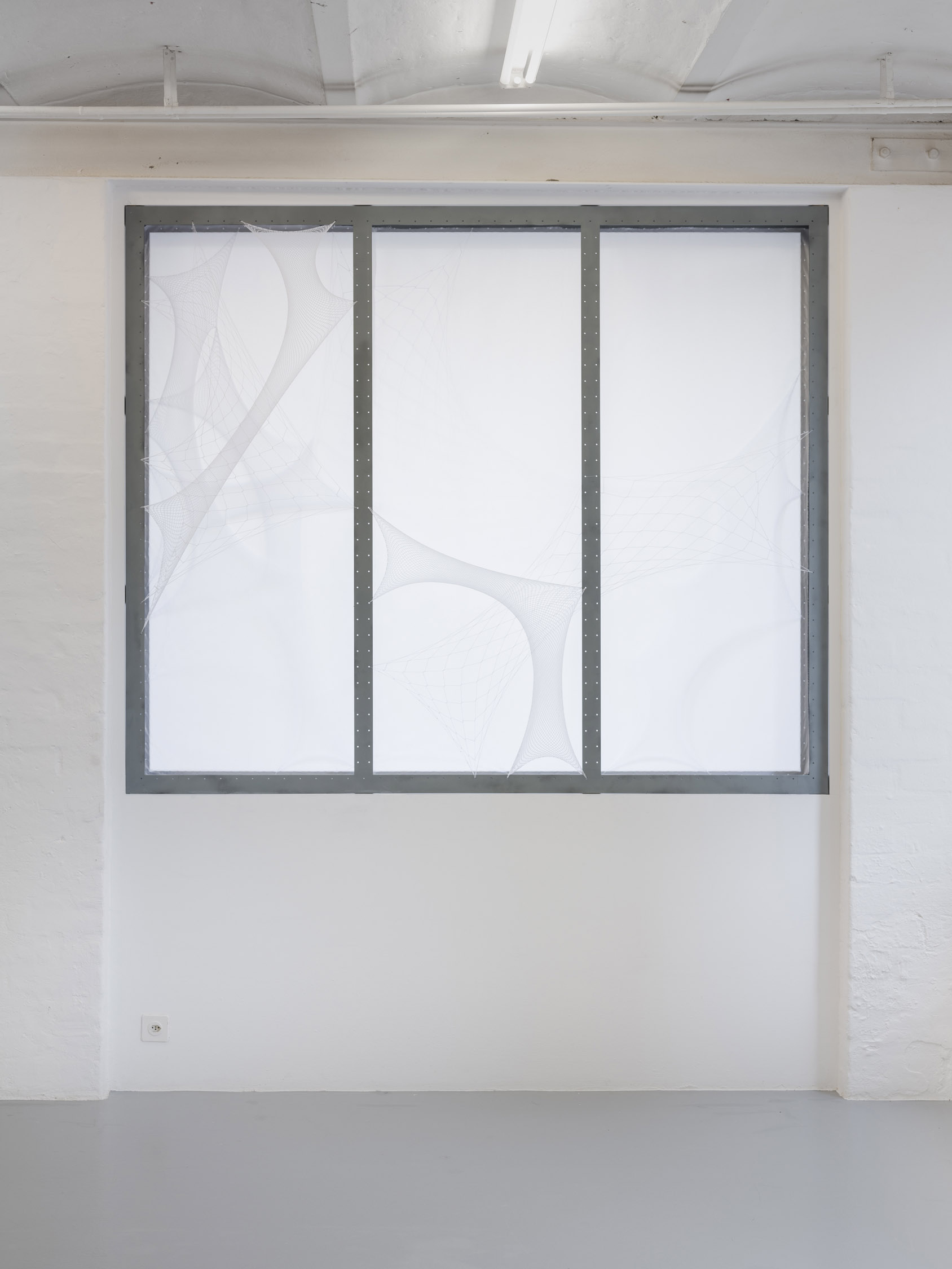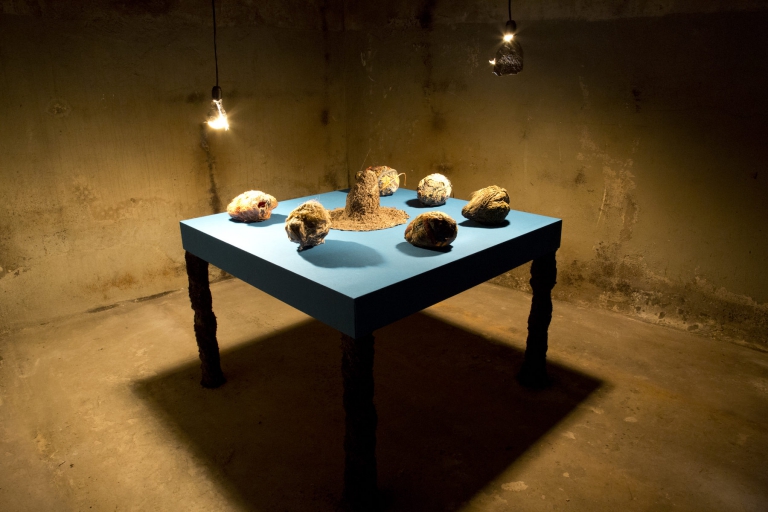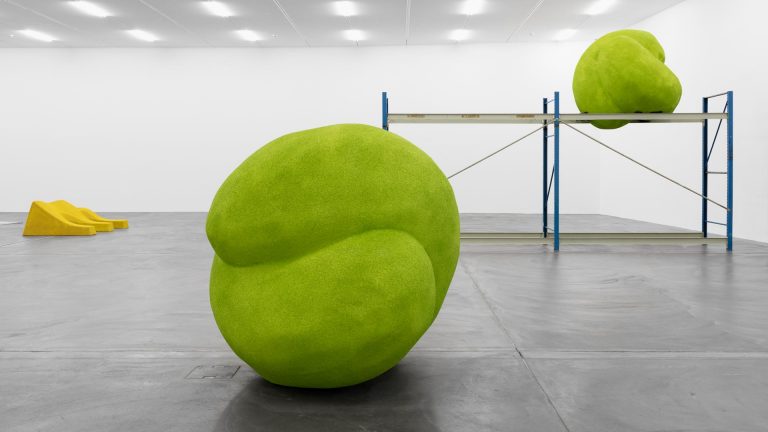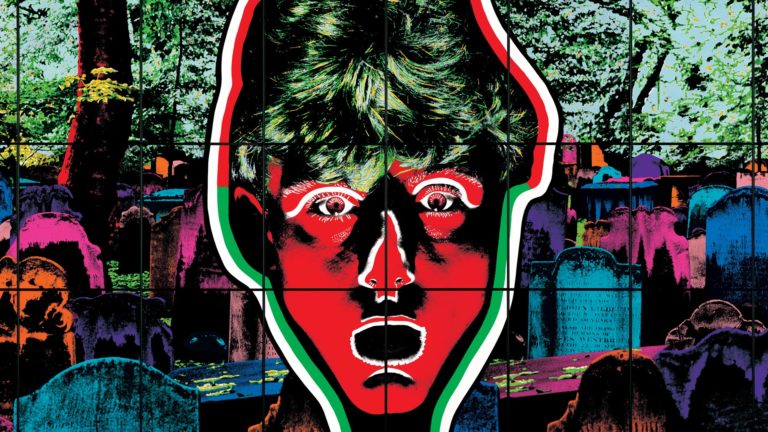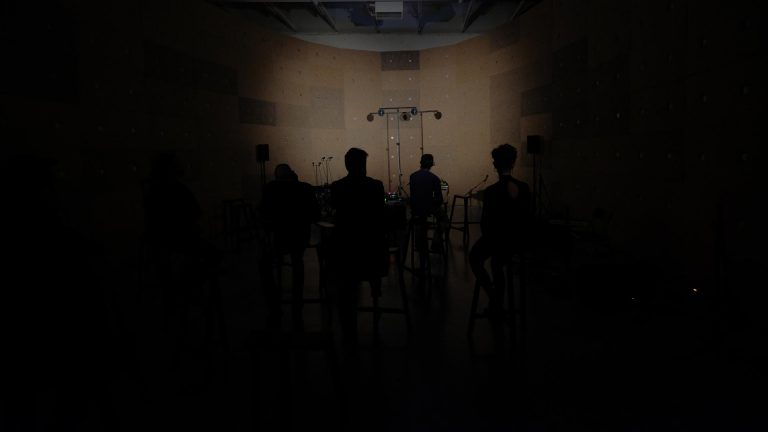Artists: Nastasia Meyrat & Mina Squalli-Houssaïni
Exhibition title: dwelling with the shadows
Venue: CAN Centre d’Art Neuchâtel, Neuchâtel, Switzerland
Date: February 17 – April 14, 2024
Photography: Sebastian Verdon / all images copyright and courtesy of the artist and CAN Centre d’art Neuchâtel
Living with the shadows when the sun disappears,
Knowing how to see where they dwell when they no longer leave any traces,
When they no longer provide any signs of life.
This is what the space created by Nastasia Meyrat and Mina Squalli-Houssaini is about. An imaginary, simulated place where dreams override everything that surrounds us.
The space is populated by sunflower creatures, Nastasia Meyrat’s exquisite but living cadavers. A chimaera leaps through the piece, half human and half vegetable, a fetish, divinity and object. A multiple and multiform identity, unarmoured, almost broken, raw. It opens up to the gaze that seizes it, lending itself to all the necessary dialectics because it emanates from an absurd logic or an aberrant common sense.
These sunflowers seem to have found a way to live together. It all makes sense. Each individual resembles the others and so they assemble. When these shadows of joyfully terrifying silhouettes take a more material form, the result is a nightmare: a ridiculous tragedy or an hilarious terror. They sway ceaselessly, illusive and evanescent, disappear during rare moments of synchronization and then reappear, always subtly changed, but leaving no trace. The discrepancy is disillusioning and challenges the utopia of the collective.
But the shadows are also frozen on the wall tapestries. There they leave more visible signs, clues, perpetually evocative traces. They generate narratives that could be taken as utopian, anti-authoritarian and full of social solidarity, alive, qualitative, quantitative – in short, open to interpretations. The fabrics are stitched together like associations of ideas comprising a big patchwork quilt. Each form exists in and of itself, but a connection connects them all together, and from this collective springs a meaning that corresponds to this union, reassuring the gaze of those capable of recognizing it.
The revolving ouroboros is an almost sacred fetich whose power reminds us that all that exists comes down to perpetual repetition. It watches over these shadows as they disappear, leaving room for others. The space is stripped of any authority, except perhaps that of time’s passage. The formal immaturity of these works comforts the gaze of those alert to the inevitable fatalism emanating from each cycle.
The metallic frames made out of industrial waste on which Squalli-Houssaini weaves her canvases and netting are projections or portals that filter (or not) the light, letting the shadows take ever new forms. They render whatever passes through them opaque, or capture fragments of its passage. They are windows, screens, that allow the eye to touch the invisible, since the visible is blocked. This work can be seen differently every time we look at it, as the sunlight moves across the room. This is how it relates to its exhibition environment.
The artisanal quality of this piece is a rampart against the massive industrialization of objects. The frames are not similar, they don’t resemble each other, but assemble together to form a barrier against all forms of voyeurism. They hide, all the better to reveal themselves, giving this piece an almost erotic charge.
This interstice and these permanent paradoxes are what these two artists are telling us about in this space that reminds us of a model apartment, where ideas pieced together in a patchwork or as chimaeras clump together and materialize. Here dualities coexist; they don’t cancel each other out but rather transform each other. In this space we wonder where these shadows will dwell; they surprise us as if we had never seen them before. And even if they frighten us they end up becoming familiar.
dwelling with the shadows takes us into an immersive shadow theatre where we encounter personal paradoxes and common questions. We seek our place amidst the collective and the individual, the figurative and the abstract, the explicit and implicit, the public and private.
Encircled by all these silhouettes waltzing to the rhythm of the vicissitudes of time, day and night, we are reminded that shadows cannot exist without the omnipresence of light. We wonder where the sun is, and we come to understand that in each of these shadows a bit of sunlight resides.
– Yasmeen El-Hamdani

